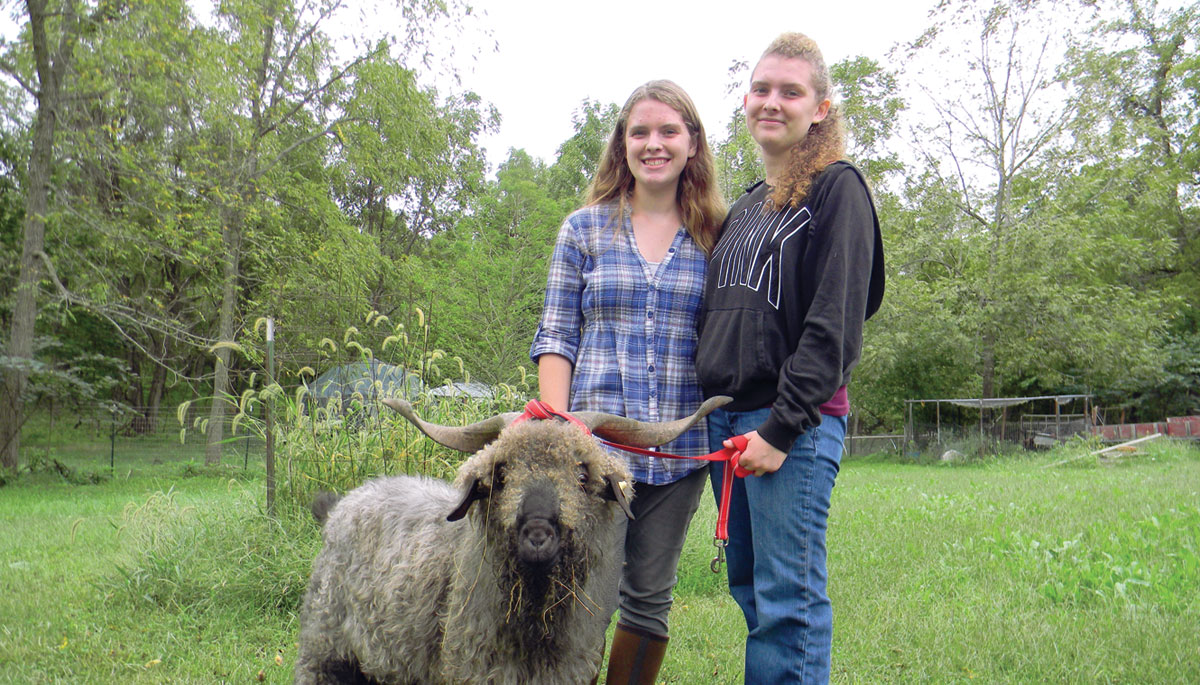 Goats have always had a place in the meat and milk markets. Here in southwest Missouri they’re not yet as prevalent as cattle, but herds are popping up everywhere. And then there's fainting goats. Recently there has been a new rise in public interest on the species, but it’s not the Grand Champions or best producers receiving all the attention. Instead, the excitement has been over these “fainting goats.” Major media attention has won these cute and comical creatures some time in the national spotlight.
Goats have always had a place in the meat and milk markets. Here in southwest Missouri they’re not yet as prevalent as cattle, but herds are popping up everywhere. And then there's fainting goats. Recently there has been a new rise in public interest on the species, but it’s not the Grand Champions or best producers receiving all the attention. Instead, the excitement has been over these “fainting goats.” Major media attention has won these cute and comical creatures some time in the national spotlight.
James and Cindy Lynn Huggins of Washburn, Mo., are the proud owners of what they believe may possibly be the only fainting goat herd in southwest Missouri or northwest Arkansas. Their 47-acre farm is home to three “fainting” bucks, 20 “fainting” does, and several new kids born this spring.
Cindy Lynn and her husband both work full-time, away from the farm, but with no children left at home, they spend much of their free time with their animals.
“We started with goats in 2000,” said Cindy, “We’ve transitioned from Nubians and Lamanchas to the Myotonic or “fainting” goats we have today.” The Myotonic goats are more popularly known as "Tennessee Fainting," "Tennessee Meat," "Texas Wooden Leg," “fainting goats," “stiff-legged” goats or “wooden-legged” goats.
“Sometimes they are running up the hill when I feed them and they get so excited to eat that their legs stiffen up and they start falling all over each other!”
“We absolutely love the Myotonics, but we love them for so many other reasons than the fact that they’re funny when they faint,” added Cindy. “In fact, they are really hardy and very easy going. They’ve got great personalities and they’re easy to keep. There are so many other qualities about Myotonics that goat owners should take note of.”
They Myotonic goats originated in Tennessee. The story goes that a Nova Scotian farm hand came to work at the farm with a buck and three does and he left them there. From that, they’re thought to come from Nova Scotia. The animals come in a variety of colors. “They’ve got very unusual eyes, and they have breed standards to follow just like any other goat breed,” commented Cindy. Another interesting fact about these small framed goats is that they’re considered an endangered breed by the American Livestock Breeds Conservancy.
“The people who own “fainting” goats are very dedicated to the breed, but not just because they faint. They’re easy kidders, they have good feet and are very self sufficient with few parasite problems,” said Cindy. There are even miniature goats within the breed that people use only for pets. She added, “Some can weigh as little as 20 pounds and big ones can be up to 150-175 pounds.”
With Cindy and her husband both working 12 hour days away from home, she really enjoys the fact that her Myotonics are very hardy and she never has to worry about helping a doe kid her babies.
“We breed for good hind quarters, good set and good feet and hooves. We want great thickness and depth of these meat goats,” Cindy added, “And in the future we want to concentrate on producing great goats. We want to promote the breed, and the fact that there’s a lot more to them than the fact that they faint. We always want to breed for the best qualities.”
With all the media attention from the National Geographic and other national publications and television programs, Myotonic goats have started gaining the attention that Cindy Huggins believes they deserve. They’re good livestock, they’re great meat goats, they’re fun, they’re pets, and they’re friends. She concluded, “The thing about Myotonics is that there is really something for everyone.”







